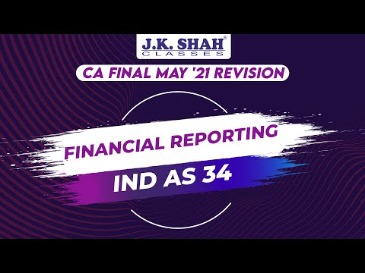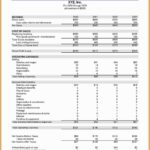Content
The creditor gives six sets of disclosures (five for the construction phase and one for the permanent phase). Each one is a residential mortgage transaction. Some creditors offer programs containing a number of different credit features. The consumer has a single account with the institution that can be accessed repeatedly via a number of sub-accounts established for the different program features and rate structures.

The fees must be paid to the clerk of the court upon filing or may, with the court’s permission, be paid by individual debtors in installments. 28 U.S.C. § 1930(a); Fed. P. 1006(b); Bankruptcy Court Miscellaneous Fee Schedule, Item 8. P. 1006(b) limits to four the number of installments for the filing fee. The final installment must be paid not later than 120 days after filing the petition. For cause shown, the court may extend the time of any installment, provided that the last installment is paid not later than 180 days after the filing of the petition.
Creditor’s Claims In Bankruptcy Proceedings
An important aspect of the creditor debtor relationship, debtors will sometimes file for bankruptcy when they are unable to repay debts. In this case, the creditor is notified by the court on the situation. The area of debtor-creditor law governs the obligations between creditors and debtors as well as the available methods a creditor can utilize to force Creditor Definition the debtor to satisfy those obligations. The primary judicial methods used to ensure performance of these obligations include liens on property, garnishment of income, and requiring other security interests. The term creditor is frequently used in the financial world, especially in reference to short-term loans, long-term bonds, and mortgage loans.
- The ordinary expenses of the ongoing business, however, continue to be paid.
- For example, in 2007 a person extends consumer credit secured by a dwelling 5 times.
- His loan goes into default.
- For example, a seller sells property to a consumer for $10,000, requires the consumer to pay $3,000 at the time of the purchase, and finances the remainder as a closed-end credit transaction.
Send us feedback about these examples. Try a better way to collect payments, with GoCardless. It’s free to get started.
What is a Creditor?
One creditor finances the initial construction of the consumer’s principal dwelling and another creditor makes a loan to satisfy the construction loan and provide permanent financing. Both transactions are residential mortgage transactions. Card issuers subject to Subparts B and C. Section 1026.2(a)(17)(iv) includes as creditors card issuers extending closed-end credit in which there is a finance charge or an agreement to pay in more than four installments.
- A party with an interest in property being used by the debtor may request that the court prohibit or condition this use to the extent necessary to provide “adequate protection” to the creditor.
- Generally, and subject to various defenses, the power to avoid transfers is effective against transfers made by the debtor within 90 days before filing the petition.
- Extensions of credit secured by a dwelling are counted towards the 25-extensions test.
- Prepaid finance charges include any portion of the finance charge paid prior to or at closing or settlement.
- A type of creditor who is backed by collateral, secured creditors protect their lending terms with assets.
This chapter of the Bankruptcy Code generally provides for reorganization, usually involving a corporation or partnership. A chapter 11 debtor usually proposes https://kelleysbookkeeping.com/ a plan of reorganization to keep its business alive and pay creditors over time. People in business or individuals can also seek relief in chapter 11.
CHAPTER 2. DEBTOR AND CREDITOR RELATIONSHIPS
Examiners may not be appointed in subchapter V cases. 11 U.S.C. § 1181(a) (making section 1106 inapplicable in subchapter V cases). (4) Where the word amount is used in this part to describe disclosure requirements, it refers to a numerical amount. (1) Where appropriate, the singular form of a word includes the plural form and plural includes singular. E. Waiver of homestead or personal property rights.

Generally, the debtor (or any plan proponent) must file and get court approval of a written disclosure statement before there can be a vote on the plan of reorganization. The disclosure statement must provide “adequate information” concerning the affairs of the debtor to enable the holder of a claim or interest to make an informed judgment about the plan. In a small business case, however, the court may determine that the plan itself contains adequate information and that a separate disclosure statement is unnecessary. A disclosure statement is not required in a subchapter V case unless otherwise ordered by the court for cause. After the disclosure statement is filed, the court must hold a hearing to determine whether the disclosure statement should be approved.
§ 815. Reports to Congress by the Bureau; views of other Federal agencies
This is commonly the case with financial institutions when periodic payments are made through payroll deduction or through automatic debit of the consumer’s asset account. 831 (D. Minn. 1990) (mere release of hazardous substance prior to confirmation of plan does not give rise to a CERCLA claim which is discharged by confirmation). Notwithstanding the entry of the confirmation order, the court has the authority to issue any other order necessary to administer the estate. This authority would include the postconfirmation determination of objections to claims or adversary proceedings, which must be resolved before a plan can be fully consummated.
- The debtor in possession may use, sell, or lease property of the estate in the ordinary course of its business, without prior approval, unless the court orders otherwise.
- (4) The representation or implication that nonpayment of any debt will result in the arrest or imprisonment of any person or the seizure, garnishment, attachment, or sale of any property or wages of any person unless such action is lawful and the debt collector or creditor intends to take such action.
- Individuals often rely on credit scores to obtain loans and extensions of credit.
Consummation does not occur when the consumer becomes contractually committed to a sale transaction, unless the consumer also becomes legally obligated to accept a particular credit arrangement. For example, when a consumer pays a nonrefundable deposit to purchase an automobile, a purchase contract may be created, but consummation for purposes of the regulation does not occur unless the consumer also contracts for financing at that time. Only commercial messages that promote consumer credit transactions requiring disclosures are advertisements. Messages inviting, offering, or otherwise announcing generally to prospective customers the availability of credit transactions, whether in visual, oral, or print media, are covered by Regulation Z (12 CFR part 1026). (f) Application means an oral or written request for an extension of credit that is made in accordance with procedures used by a creditor for the type of credit requested.
The winning plaintiff in a lawsuit to whom the court decides the defendant owes money. A judgment creditor can use various means to collect the judgment. The judgment is good for a specified number of years and then may be renewed by a filed request. If the defendant debtor files for bankruptcy, the judgment creditor will have priority (the right to share in assets) ahead of general creditors who are not secured by mortgages or deeds of trust and do not have judgments. However, if the bankrupt person has no assets, this becomes an empty advantage. Real creditors are banks or finance companies that have legal contracts and loan agreements with the borrower that grant the lender the right to claim any of the debtor’s real assets or collateral if the loan is unpaid.
Interests that arise solely by operation of law are excluded from the general definition. Also excluded are interests arising by operation of law that are merely repeated or referred to in the contract. However, if the creditor has an interest that arises by operation of law, such as a vendor’s lien, and takes an independent security interest in the same property, such as a UCC security interest, the latter interest is a disclosable security interest unless otherwise provided.
Resource Guide for Legal and Financial Professionals
Sellers who arrange credit. If the seller of the property or services involved arranged for financing but is not a creditor as to that sale, the transaction is not a credit sale. Thus, if a seller assists the consumer in obtaining a direct loan from a financial institution and the consumer’s note is payable to the financial institution, the transaction is a loan and only the financial institution is a creditor.
- A request for revocation of confirmation, if made at all, must be made by a party in interest within 180 days of confirmation.
- Avoiding powers prevent unfair prepetition payments to one creditor at the expense of all other creditors.
- Single asset real estate cases are ineligible for the small business or subchapter V election.
- In earlier times, credit also referred to reputation or trustworthiness.
- Both transactions are residential mortgage transactions.
- In contrast to subchapter V and other chapter 11 debtors, debtors in small business cases are subject to additional oversight by the U.S. trustee.
For example, if Jay loans Reva $100, Reva is the debtor and Jay is the creditor. One way to remember this is that the debtor is the party that owes the debt. (21) Periodic rate means a rate of finance charge that is or may be imposed by a creditor on a balance for a day, week, month, or other subdivision of a year. (iii) The amount of credit that may be extended to the consumer during the term of the plan (up to any limit set by the creditor) is generally made available to the extent that any outstanding balance is repaid. Verifications of collateral value.
